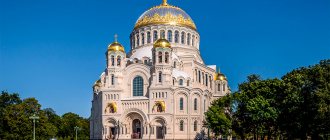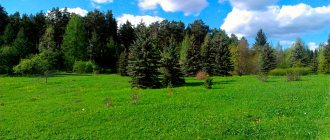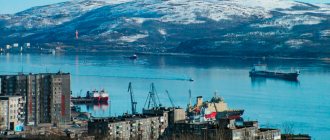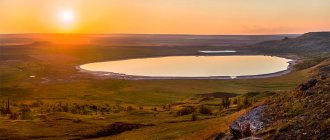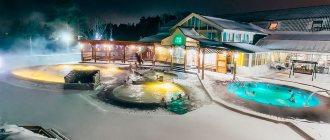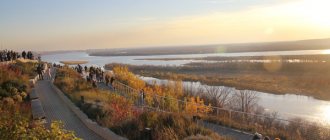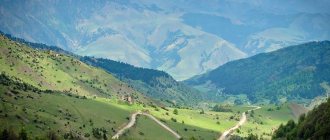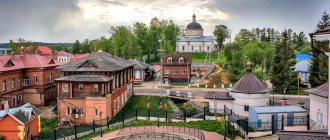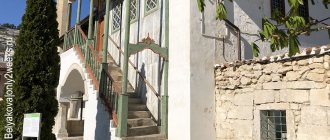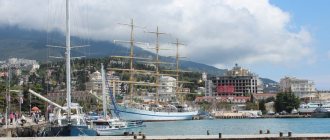Kronstadt is a fortified city and a city-museum of naval history three hundred years old. It was founded personally by Peter the Great on the island of Kotlin and still retains its importance in the service of Russian naval affairs and serves as a commercial port.
The city has only been open to the public since 1996, and currently part of it is a UNESCO World Heritage Site. A visit to the city for sightseeing will not require more than one day, but the number of surviving antiquities and architectural monuments is numerous.
Naval St. Nicholas Cathedral on Anchor Square
Address: Yakornaya Square, building 1 Telephone: 8-921-379-29-93 Website: https://kronshtadtsobor.ru/about/ https://spb-20851.cerkov.ru/ Opening hours: daily from 10:00 until 19:00. Schedule depends on the service
Panorama of Anchor Square with a view of the cathedral:
It was founded in 1903 and is a rare representative of thematic temples. The cathedral was built so that sailors would first see its dome and cross when approaching the island. It was planned that it would serve as a kind of guiding light.
The interior decoration of the temple followed a marine theme - round windows reminiscent of portholes, the floor was lined with mosaic images of “sea creatures” - fish and jellyfish. It had the largest stained glass elements in Russia at that time.
The cathedral contained almost two hundred marble plaques with the names of fallen sailors and officers. In Soviet times, memorial plaques were taken out for use in everyday needs - the construction of steps and pavements.
A cinema was installed in the cathedral. M. Gorky, and the people gave the former monument to sailors the humiliating nickname “Maksimka”.
At the moment, the Naval Cathedral has been transferred to the subordination of the church and restored. The finishing elements differ significantly from the original ones, but retain the marine theme. The dome of the cathedral is covered with gilded ropes and decorated with anchors; the interior decoration is reminiscent of the underwater world, subtly illustrating the final resting place of sailors.
The cathedral is located on Anchor Square , the place where old anchors were kept before it was founded. The former purpose of the square is reminiscent of the tiled pattern depicting an anchor.
On Anchor Square you will see:
- Monument to Admiral S.O. Makarov
- Mass grave of those killed during the Kronstadt uprising
- Wall of Fame
- Stop anchors from the ship "October Revolution"
- Cathedral of the Vladimir Icon of the Mother of God
Monument to Peter I
Kronstadt received the most attention during the reign of Nicholas I. Then a large stone construction was carried out, fortress defensive structures were erected, the stone fort Peter I was put into operation, and a project was created for the fort Emperor Alexander. The founder of the island city, Peter I, also received due respect, and a monument was erected to him. The monument was installed on a granite pedestal decorated with bronze ornaments. The words of Peter himself are engraved on the monument: “To maintain the defense of the fleet and this place to the last strength and stomach, as the most important matter.”
Cathedral of the Vladimir Icon of the Mother of God
Address: Kronstadt, Vladimirskaya st., building 32 Telephone: , 311-53-30 Website: https://www.kronshtadt-pravoslavny.ru/svyatiny/hrami/vladimirsky/ Opening hours: daily from 09:00 to 20 :00 (the Upper or Lower Church is open), schedule of services
The history of the cathedral begins in 1730, but a century later the buildings and chapel were destroyed by fire, and it received new life only in 1875, changing the status of a garrison church to the status of a cathedral.
In the 1950s, at the peak of anti-religious sentiment, there were three attempts to blow up the building in order to build a library in its place, but the cathedral miraculously survived, and attempts to destroy it were abandoned because nearby houses were damaged.
The restoration did little to change the original appearance of the cathedral: it is eclectic. Preserving the traditions of Russian architecture, the architects combined them with elements of Gothic and Byzantine style.
Near the cathedral you will see:
- Stone chapel from 1870
- The grave of Archpriest Vasily Saltykov (1898)
Short description
Kronstadt is a Russian port city located on the island of Kotlin in the Gulf of Finland. Today, about 44,000 people live on its territory of 19.35 km². Translated from German, the word “Kronstadt” means “City – Crown” , “Fortress – Crown”. The name reflects the significance of the place. Initially, the city served as a shield for St. Petersburg from enemies from the sea.
are organized daily from St. Petersburg to Kronstadt , then you can familiarize yourself with various excursion programs.
View this post on Instagram
I walked around Kronstadt. When God saw #Kronstadt he came up with autumn. But in general - see for yourself. The only thing is that the video shows a bunker, not a bunker. A bunker is a simpler construction.
A post shared by Interesting things in St. Petersburg (@walkingontheroofs) on Sep 23, 2022 at 6:50am PDT
Petrovsky Park
Address: In the square bounded by the street. Makarovskaya, Arsenalny lane. and the Petrovsky dock canal
Panoramic view of the park from the pier:
It was founded in the nineteenth century by the governor of Kronstadt F.F. Bellingshausen, who was concerned about the appearance of the city. The governor did not like the continuous streets and the dirt on them, and he personally took up the task of landscaping. Having cleared the swamp adjacent to the shore of the bay, he himself selected seedlings and thought through the plan for the future park “in Dutch calm.”
The center of the park was the monument to Peter the Great, and its end was the Winter Marina, from which you can still see the powerful ships of the Baltic Fleet.
In addition to these attractions in Petrovsky Park you will see:
- Stone vases from 1882
- Cannons and cannonballs from the ship "Emperor Paul I"
Summer garden
The garden is located in the historical center of the city, not far from Anchor Square. The main alley of the garden is all that remains of Petrovskaya Perspective, the first street of Kronstadt. Here was the house of Peter I, surrounded by flower beds and alleys, which unfortunately became dilapidated and destroyed over time.
Summer garden
The Summer Garden has gone through several reconstructions: one of them in the first third of the 19th century, the last one in 2022. After it, the park was again open to the public. Inside you can find several interesting monuments. One of them - the feat of midshipman Domashenko - was created on the initiative of Admiral M.P. Lazarev and Lieutenant P.S. Nakhimov; the other was erected in 1883 and is dedicated to the memory of the clipper Oprichnik, which supposedly died off the coast of Madagascar.
On the outskirts of the garden, closer to the Dock Pool and the border with the Ravine Park, a sign was placed next to the oak tree planted in 1902 by Admiral Makarov. In general, the park is a quiet and cozy place for walking, which has preserved the charm of irretrievably gone antiquity.
- Address: limited by the Petrovsky Dock ravine and Krasnaya Street; The main gate faces Petrovskaya Street.
- Cost of visiting: free.
Petrovsky dock
Address: Petrovsky Dock Canal
View of the dock from Makarovskaya Street:
A monument to the mind and ingenuity of Peter the Great. Built for quick repair of ships entering the port. Letters from Dutch engineers have been preserved. Peter set them the task of designing a dry dock, from which water could be pumped out in less than a month. In their letters, the Dutch touchingly fantasize about steam pumps that have not yet been invented, capable of fulfilling the sovereign’s task, but classify them as unrealistic theorizing. Peter solved the problem radically: using the manpower of captured Swedes and peasants, he created a dock, the water from which flowed into a lake located below the dock level.
The project expanded and dragged on: a canal was dug, a wind tower-water pump was built. Peter did not see his docks ready; construction was completed after his death. But the dock, drained in less than a month, with a capacity of ten ships, served sailors for another 75 years before the invention of the steam pump.
Wish tree
After a walk in the park, we suggest going out onto Karl Marx Street to look at a unique architectural monument - the Tree of Wishes . This sculpture was created as a gift for the 300th anniversary of the city.
The four-meter monument is a spreading tree with a fawn standing near it. Tourists and city residents come here to make a wish. Don't miss the opportunity too!
Museum of the History of Kronstadt
Address: Kronstadt, Yakornaya Square, 2-a Telephone: Website: https://www.kronstadt.ru/museum/ https://visitkronshtadt.ru/muzey-istorii-kronshtadta-yakornaya-ploschad-2a. Opening hours: daily except Wednesday, from 11:00 to 18:00. The ticket office closes at 17.00. Cost: entrance tickets to the museum exhibition “Three Centuries of Kronstadt History” - adults 150 rubles, schoolchildren and pensioners - 75 rubles, children under 7 years old free, family ticket (2 adults and 1 child from 7 to 18 years old) - 300 rub. Children under 18 years old - every third Tuesday of the month is free. Preferential categories (university students, disabled people, WWII veterans, large families, etc.) - free. A complete list of preferential categories is on the website. Excursion for a group of 1-15 people. — 600 rub., for groups over 15 people. — 40 rub./per person. Full information on excursions on the website
A combined historical and local history museum, the exhibitions of which were collected by the whole world. It tells about the construction of fortifications, the foundation of the fortress and the city, and the difficult military history of Kronstadt. Contains several thematic exhibitions on maritime topics.
Do you know how Russia got Kotlin Island? According to the Tyavzin Peace Treaty, it belonged to the Swedes for two hundred and fifty years. In the seventeenth century, Peter the Great, appreciating the importance of the island’s location, built the first fort on the island in one winter, accomplishing the almost impossible. The Swedes, having opened the navigation and returned, could not believe what they saw.
It seemed easy and simple to break through the hastily constructed fortifications. But in the entire three-hundred-year history of Kronstadt, not a single enemy ship could do this. The Swedes also failed to return the island. They gave up trying after several unsuccessful attacks.
The history of the hero city of Military Glory is presented in more than six thousand exhibits of the museum.
Let's sum it up
There are many attractions of Kronstadt, and it is simply impossible to list them all. One thing clings to another, and, examining the small territory of the historical center, one can imagine a whole heap of amazing incidents that happened here once. Kronstadt is a port city, a fortress city, the northern border of our country in the Baltic Sea. Founded, like St. Petersburg, by the will of the great emperor, it has a proud sea soul, the soul of a hero capable of a desperate feat.
Come to Kronstadt for the romance of the endless water element, the spirit of ancient fortresses, and the light of endless lighthouses. Everything here breathes the salty air of travel and freedom. Here everything is glory and everything is history.
Kronstadt Maritime Museum
Address: St. Andreevskaya, 5 Telephone: tel./fax, mobile. +7 (931) 366-51-78,. Website: https://www.fertoing.ru/museum Opening hours: Wednesday, Friday, Saturday, Sunday from 11:00 to 18:00 Cost: free admission
The main exhibition of the museum outlines the theme of the development of diving. Based on the history and experience of the Kronstadt diving school, founded in 1882. The school's students hold two world diving records to depths of 55 and 61 meters. Children will enjoy the exhibits: they will have the opportunity to try on elements of diving equipment and feel like real submariners.
The museum exhibits include:
- The first device for underwater photography
- Hall dedicated to diving medicine
- Underwater electric lamp
- Underwater phone
Gostiny Dvor
This monument of history and architecture of the 19th century is located in the very heart of the island city. Gostiny Dvor occupies an entire block between Lenin Avenue, Grazhdanskaya Street, Karl Marx Street and Sovetskaya Street. The building was built in the image and likeness of the St. Petersburg Gostiny Dvor according to the decree of Nicholas I, who noted the ugliness of the shopping arcades that were previously located here. However, in 1874, the Kronstadt Gostiny Dvor burned down, and now we can see its more modern copy.
Forts of Kronstadt
Address: The forts are located in the adjacent waters of the Gulf of Finland; forts 3, 7, “Schanz” and “Reef” are accessible from the dam. Website about the history of forts: https://www.kronstadt.ru/kronstadt_forts.htm https://visitkronshtadt.ru/ How to get to the forts :
- The easiest option is to book a tour.
Phone for ordering: Applications for boat trips with and without disembarkation at the fort - by pre-order by phone. Applications for individual excursions around the forts - tel., information here Cost: Excursion without going to the fort: for groups of 15 people or more.
— adults 400 rub./per person, children under 12 years old — 300 rub./per person, for individual visitors (up to 15 people): adults — 550 rub., pensioners — 450 rub., schoolchildren from 7-12 years old — 350 rub. With access to the fort: adults - 850 rubles, pensioners - 650 rubles, schoolchildren from 7-12 years old - 500 rubles. Also excursion boats depart from the pier at Fort Konstantin (southern end of the Ring Road)
- On one's own
Most of the forts are in serious disrepair, and some are guarded and located in the department of the Russian Navy, where exercises are conducted. Therefore, you can inspect the forts accessible from the coastline or dam, but perhaps only from the outside: Konstantin (southern end of the Ring Road), Rif and Shants (western part of Kotlin Island), 1st Northern Fleet (north of the island), 3rd Northern fleet (dam), Peter I (Citadel highway, 20).
Nineteen partially or fully preserved forts are located on bulk islands in the Gulf of Finland.
The age of the forts varies from three hundred to a hundred years. They were built gradually, as needed. During construction, at first, the methods and experience of Dutch engineers were used; later, Russian engineers and builders developed their own style of pouring islands and securing soils.
Night view of Fort Shantz:
Forts that can be visited on excursions:
- Fort "Constantine"
- Fort "Milyutin"
- Fort "Obruchev"
Each fort has a unique fate and architecture. The complexity of their construction and their combined power illustrate not only the intelligence and skill of the engineers and builders, but also the tenacity of the island’s defenders.
Some forts are visible from the banks. Surrounded by waves and seagulls, they menacingly and calmly guard the island, giving the impression of ancient giants frozen in the water under someone’s spell.
Visiting and exploring the forts is part of a must-see program for those who want to feel the real character of the city.
Dutch cuisine
Between the Merchant Harbor and the Italian Pond there is the Dutch Kitchen, an architectural monument of the early 19th century, created by an unknown architect. Previously, on the same site there was a wooden building of a similar purpose: food was prepared here for the crews of ships stationed in Kronstadt harbor.
Dutch cuisine
The need for such a specific establishment was associated with the ban on the operation of kitchens on ships: careless handling of fire could lead to catastrophic consequences. The Cocas came here, bringing with them firewood, water and food; there were many inconveniences, but the Kronstadt commercial port was popular, and the existence of Dutch cuisine justified itself for a certain time. In 1885, a new Sea Canal opened, and ships began to enter St. Petersburg directly. Kronstadt lost its former significance, and the Kitchen ceased to be used for its intended purpose.
It stood idle for a long time, until in 1912 the premises were converted into a power station; at the beginning of the Great Patriotic War it was again handed over to the sailors. Now the Dutch Kitchen building belongs to the Russian Navy and is used as a warehouse.
- Address: between the Italian Pond and the Merchant Harbor.
- Cost of visiting: free.
Streets of Kronstadt that you need to visit
Kronstadt is interesting for a leisurely walk, even if you move without a particular goal. You will come across many abandoned buildings from the seventeenth and eighteenth centuries; the remains of blown up churches; monuments to sailors and submariners. Remains of fortifications and walls accompany residential buildings along the coastline. Arches and former protective ramparts have become part of the functional life of the city: for example, they are combined with guarded parking lots.
But the most pleasant thing is to walk along the streets:
- Makarovskaya street
- Petrovskaya street
- Soviet street
These are the historical main streets of the city, green and clean. In its outskirts, Kronstadt is heavily littered. This can interfere with a walk with the children or simply ruin the mood: it’s painful to see ancient walls littered with plastic, rubbish and covered in paint. However, the painting is not for everyone, and on the outskirts you can find many expressive objects of antiquity. On Makarovskaya Street you will see:
- Blue bridge and foot rod (measuring device for determining water level)
- Monument to the Siege Stickleback
- Italian Palace (eighteenth century)
- Italian pond with fountains
- Arsenal
Virtual walk along Makarovskaya Street:
Petrovskaya Street will take you to:
- Summer Garden
- Hemp Bridge
Virtual walk along Petrovskaya Street:
Petrovskaya Street runs along the Obvodny Canal with the buildings of the now closed barracks from the early eighteenth century.
Sovetskaya Street is a green area with beautiful parks decorated with cast-iron gratings from the early nineteenth century. You will go through:
- Summer Park
- Andreevsky Square
- Along Gostiny Dvor (nineteenth century)
- Catherine Park
Virtual walk along Sovetskaya Street:
Italian Palace
In Kronstadt you can see not only lighthouses and fortresses; There are also excellent examples of civil architecture, one of which is the Italian Palace. This building was built in 1721–1724, but the later reconstruction of the mid-19th century completely transformed the appearance of the palace, so that nothing remained of its original appearance in the Peter the Great Baroque style.
Italian Palace
Where the name by which the palace is popularly known came from is not very clear. There is a version that the reason for this is the Italian craftsmen who allegedly worked on it, however, most likely, it is due to the style of the building, which is similar to Italian. Another nickname for the palace - Menshikovsky - appears only at the beginning of the 19th century and is apparently based on memories of the prince’s wooden palace that stood on this site.
The premises changed owners several times and passed from hand to hand, but mainly military educational institutions of various profiles were located here: the Naval Cadet Corps, the Navigation School, the Engineering School of the Naval Department. After the revolution, the palace was also used for the needs of the Soviet government.
Near the palace there are several interesting monuments: a sculpture by P.K. Pakhtusov, a Russian navigator and hydrographer, and the Admiralty anchor, installed in the year of the 310th anniversary of the Kronstadt fortress and the 95th anniversary of the Leningrad Naval Base. Opposite the building is the Italian Pond, created according to the plans of Peter I.
- Address: Makarovskaya street, 3.
- Cost of visiting: free.
Mareograph
Next to the Blue Bridge there is a small yellow building with a spire that resembles an Admiralty needle. This is the tide gauge pavilion, built in the mid-20th century.
Tire gauge pavilion.
Another unclear word. This also needs to be clarified. A tide gauge is a self-recording instrument that automatically determines and records the water level in the sea. It turns out that this is an improved footpole.
Inside the pavilion there is a deep well, which is connected to the Gulf of Finland through a system of canals. Remember physics lessons? What is the law of communicating vessels?
Attractions
Kronstadt has a rich history and since 2009 has had the honorary status of “City of Military Glory”. The center of the suburb farthest from St. Petersburg is fully included in the UNESCO list. On the small territory of Kotlin Island there are more than 300 valuable historical and cultural monuments.
Forts
The defensive structures in the north and south of Kotlin Island deserve special attention. The first construction began in Peter's time. In total, since 1704, a chain of fortifications consisting of 21 objects was erected. Seventeen of them are located in the Gulf of Finland.
Fort "Kronshlot"
In 1704, the Kronshlot fort was erected to conduct defensive operations and protect against the Swedes during the Northern War. Occupies the territory south of Kronstadt. The building was rebuilt several times. The last modernization took place at the end of the 19th century. Today the object is strategic and is only accessible for external inspection.
Fort Constantine
One of the largest artillery fortifications in the city. Served for the defense of the southern harbor of Kronstadt. The fort was founded in 1808 , construction work was completed in 1901.
The name was fixed in 1834 after the visit of Nicholas I, who gave the order to name the fort in honor of his son
, a two-tier battery for 45 guns was built . The purpose of the construction is to ensure border security and protection from the British naval forces. The fort was distinguished by the presence of the latest weapons. There was a garrison of 250 people on the territory. Today the fort is in satisfactory condition. In the 60s it was disarmed and plundered. At the beginning of the 21st century, the place began to develop in a cultural and tourist direction.
Fort Emperor Alexander I or Plague
Fort "Alexander I" was built in 1845. It is located south of Kotlin, 5 km from the city of Kronstadt. Construction work lasted more than 10 years, during which time more than 1.5 million rubles from the state treasury were spent on the construction of the protective structure. For military purposes, 11-inch guns were installed, and all approaches were mined. In the entire history of its existence, the fort has never had to use its existing arsenal and fight with enemies . Since 1897, the territory housed a Russian anti-plague laboratory. Doctors with their families and staff moved into the territory.
Communication with the mainland was carried out by the ship "Microbe"
In 1918, the laboratory was disbanded and the fort's activities stopped. Today the place is open to visits by organized excursion groups.
Northern chain of fortifications – Fort Obruchev and Totleben
Two forts Obruchev and Totleben are located in the northern part of Kronstadt. Construction of the Obruchev fortification began in 1896. 17 years later, the largest of the St. Petersburg forts was erected. The name was given in honor of Adjutant General Obruchev . The construction of the fort was supervised by A. A. Shishkin. The engineer also supervised the construction of Fort Totleben. The structure was named in honor of the outstanding engineer who participated in the construction of the Kronstadt Fortress. Work also began in 1896. The building has been well preserved to this day. Since 2010, the fort has become publicly accessible.
Excursions to the forts of Kronstadt
The excursion program to the forts of Kronstadt is popular among tourists. These are specially designed programs designed for different age categories. During 1.5 hours, everyone will learn the unique history of the creation of fortifications and their role in protecting the northern capital of St. Petersburg. The program includes visiting up to 8 forts.
Cathedrals and Temples
more than 40 Orthodox churches and cathedrals in the city of Kronstadt . The buildings are a cultural heritage; the pearl was the St. Nicholas Naval Cathedral in the city center on Anchor Square. Triangular in shape, it is paved with tiles grouped in the form of an anchor pattern. A distinctive feature of the central architecturally organized space with an area of 19.4 km2 was the preserved part of the cast-iron pavement. The place has always been a gathering center for citizens and guests of the city; it was used for parades and special events.
Naval St. Nicholas Cathedral
One of the main attractions of Kronstadt in the neo-Byzantine style rises on Anchor Square.
The height of the Naval St. Nicholas Cathedral together with the cross was 75 m, and the diameter of the dome was 26.7 m.
Initially, in its place there was a modest wooden church for sailors. The Church of the Epiphany was small in size and could accommodate all the parishioners. In 1896, on the initiative of Vice Admiral Nikolai Ivanovich Kaznakov, a petition was submitted to the government for the construction of a new Orthodox church. A year later, fundraising for construction began.
Nicholas II approved the project of A.I. Tomishko, but it was not approved by the Committee for the Construction of the Cathedral. The plan of the architect V. A. Kosyakov was adopted as a temple-monument to the dead sailors. Construction work began in 1902 and was completed in 1913.
1,876,000 rubles were spent on construction
In 1929 the temple was closed. Used as a cinema , in 1974 the cathedral became a branch of the Naval Museum. In 2002, the building was again handed over to the believers, a cross was erected on the dome, and in 2005 the first liturgy in many years was held. After 8 years, the last restoration work was completed. The cathedral is open daily from 9.00 to 19.00.
Memorial on Anchor Square
Once in the main square of the city, you should pay attention to the Memorial to those who fell for the cause of the revolution . Local authorities held a competition to create the best project, the winner was the talented L.K. Larionova. The grand opening took place in November 1974. Since 1980, the memorial has been decorated with the “Eternal Flame”.
St. Vladimir's Cathedral
On Vladimirskaya Street, house 32, there is a temple of the Vladimir Icon of the Mother of God, made in the style of Russian architecture of the 17th century. The interior decoration has common features with early Christian basilicas. It was erected on the site of a wooden church of the same name. The structure was rebuilt several times in wood, and in 1874 work began on the construction of a stone cathedral according to the design of the architect D.I. Grimm. Construction was completed in 1879, and finishing was completed another three years later.
In 1931, the cathedral was closed and converted into warehouses. During the Great Patriotic War, the building was badly damaged and was empty for a long time. In 1990, the cathedral was returned to believers. Restoration work was carried out. The capacity of the temple was 3 thousand people. Open daily from 9.00 to 20.00.
Cathedral Chapel
In 1870, a chapel was built at the cathedral. The building is located at the intersection of Vladimirskaya Street and Lenin Avenue. The building was erected at the expense of the merchant V.V. Epishkina. Today it is operational.
Open daily from 9.00 to 20.00.
Monuments
about 30 monuments in the city . Among them is a monument to V.I. Lenin, V.I. Isaev, S.M. Kirov, A.S. Popov, I.K. Aivazovsky. Monuments tell about important historical events of the city, prominent cultural and historical figures.
Monument to Peter I
In 1841, at the behest of Emperor Nicholas I, a monument to Peter the Great appeared in the center of Petrovsky Park. The 8.66 m high monument is erected on a granite pedestal. The sculpture was made by the sculptor Theodore-Joseph-Napoleon-Jacques, the casting was done by P.K. Klodt. The work was carried out in St. Petersburg at the Academy of Arts. The opening took place on June 27 - the anniversary of the victory in the Battle of Poltava.
Monument to Makarov
Another decoration of the main square of the city was the monument to the Russian admiral, explorer and shipbuilder - Stepan Osipovich Makarov. The creator of the bronze sculpture was L.V. Sherwood. The sculptor created a monument with a total height of 8.5 m. Upon careful examination of the pedestal with bas-reliefs, the viewer will recognize all the significant historical events in which Makarov took part.
Dutch cuisine
Among the historically significant objects worthy of attention for the city, it is worth highlighting the building of the Dutch Kitchen. Initially, between the Italian Pond and the Merchant Harbor there was a wooden kitchen for sailors whose ships were docked in the city harbor. The construction of an unknown architect included 8 compartments. Since 1828, city authorities began to charge fees for the use of kitchen facilities. Gradually, the place ceased to be used for its intended purpose and turned into a homeless shelter. From 1912 to 1940, the city's power plant was located within the walls. During the Great Patriotic War, the building was returned to the sailors and today belongs to the country's naval forces.
Makarovsky Bridge
Another attraction of the city center is the Makarovsky Bridge. The building of 1912 is located next to Anchor Square. The pedestrian bridge, built at the behest of Nicholas I, is one of the architectural monuments of the 20th century.
Monument to the Siege Stickleback
On Karl Marx Street 1/1 there is a monument to the fish Stickleback. The opening of the monument took place in 2005, the solemn event was timed to coincide with the 60th anniversary of the victory of Russian troops in the Great Patriotic War. The fish, which became a life-saving source of food during the difficult days of the blockade , was made by sculptor N.V. Chepurnaya.
Parks and gardens
The city of Kronstadt has a large amount of greenery. Children and adults can spend time in one of the city's gardens or parks.
Patriot Park
Soon a military-patriotic park, Patriot, will appear in the city of Kronstadt. 450 m2 of land were transferred for its area. The place of cultural leisure appeared thanks to the decision of Sergei Shoigu , the Minister of Defense. The park is planned as a symbol of military naval glory. Construction work began in 2017.
The park is located in the west of Kotlin Island. It occupies the site of the former Mortar Battery No. 1 and the abandoned Demidov artillery battery. You can get to the park by bus No. 2, which runs around Kronstadt - stop “Gardening”. If you have your own vehicle, you can get to the facility via Kronstadt Highway, building 44B.
Summer garden
The park, with an area of 5.1 hectares , was created under Peter the Great and became the first public city garden in 1806. At the beginning of the 19th century, it was rebuilt according to the design of I. I. Charlemagne. Initially, the basis of the garden was made up of personal greenhouses and gardens of the houses of the “Tsar’s City” - once the main street of Kronstadt with the houses of the royal persons and entourage. The territory of the oldest park is surrounded by a cast-iron, gilded lattice. On the territory of the Summer Garden there are a number of monuments dedicated to the exploits of sailors.
Open to the public every day. Located in the city center on Petrovskaya Street.
Andreevsky Square
In the center of the city there is the oldest park, distinguished by the beauty of the landscape. The square was named after the cathedral of the same name located on its territory. The center of St. Andrew's Square is decorated with a small fountain in the shape of a round bowl, and the perimeter is surrounded by a high metal fence.
Petrovsky Park
At the end of the 19th century, a small garden was founded on the territory of the former Arsenalnaya Square. The organizer was the city governor, Bellingshausen. Subsequently, it was decided to create a decent park; the task was entrusted to engineer Valuev.
Petrovsky Park was founded in 1845 and today covers an area of 5.6 hectares. Open to the public every day. Located between Makarovskaya Street and Petrovskaya Pier.
Gostiny Dvor
Another attraction of Kronstadt is the Gostiny Dvor, built in 1832. The building in the classicism style was designed by the architect V.I. Maslov, the construction work was supervised by K.K. Beil. Gostiny Dvor was badly damaged during the fire of 1874, but was restored by 1877. Today, shopping arcades crowd the pavilions of the second floor. The last restoration of Gostiny Dvor was completed in 2007.
Located at Lenin Avenue, building 16. You can get to the place by any Kronstadt bus.
Docks of Kronstadt
The city of Kronstadt is known for its unique hydraulic structures. The city's docks became a real breakthrough in the world of shipping and made it possible to quickly repair ships.
Dry docks
In the 18th century in Europe, it took up to 2 months to drain docks; Peter planned to significantly reduce this period to several weeks. Together with engineers, we managed to find a solution to the most important problem. Great minds have found a way to quickly release water and leave a visiting ship in dry dock . The construction was planned to be below sea level, which ensured the natural flow of water into the dock. To drain the water, a special pool was used, dug below the level of the dock itself. A number of large dry docks are located at the Kronstadt shipyard, located at the address on Petrovskaya Street.
Doc Surgina
A number of historically significant dry docks were built at the Kronstadt Shipyard. One of them was the Doc named after Surgin, a deceased activist in the country’s revolutionary events. Initially it was called Nikolaevsky , as the memorial plaque on the building reminds. The construction work was carried out by two engineer-colonels - Fullon and Zarzhadsky. Construction began in 1830 and ended in 1846.
Veleschinsky Doc
One of the youngest docks in Kronstadt was opened in 1914. Named in honor of a young factory worker who tragically passed away in 1919, the Veleshchinsky dock became one of the largest not only in Russia, but also in the world. The length was 228.6 m, depth 10.67 m and width about 36 m. The structure was built according to the design of V.P. Shavernovsky and the leadership of B.A. Berg - engineer and lieutenant general. The dock continues to work continuously today.
In fact, it was under repair only once in its history.
Petrovsky Docks of Kronstadt
Construction of the oldest hydraulic structures in Kronstadt began in 1719 under Peter the Great. More than 3,000 people helped with construction work. Construction was completed after the death of Peter during the reign of Elizabeth Petrovna. In 1752, she personally launched the sluice mechanism. The 2.4 km long dock coped with pumping out water in just 9 days. The structure served for 75 years and today is in satisfactory condition.
Cannons and anchors
Walking along the streets of Kronstadt, guests will see a large number of cannons and anchors. They serve as a reminder of the military past and historical purpose of the fortified city. Recently, the question of restoring the city's tradition of the noon shot has been raised. Residents heard it for the first time in 1872. In 1934, a ban on firing a cannon was adopted. After another 23 years, the tradition returned and lasted until the 70s. The shot was fired near Petrovsky Park using an 85 mm gun. Today the government has resumed the tradition and the shot is fired from the 45-mm cannon of the destroyer Bespokoiny.
Palaces of Kronstadt
The Italian became the decoration of the city . The construction of a three-story building in the style of Peter's Baroque began in 1717 and was completed in 1724. Initially, the German architect I. F. Braunstein erected walls for Peter's associate, Alexander Menshikov. Subsequently, the building was used for the needs of a navigation school , a cadet corps, and a college.
The structure was rebuilt several times, many famous architects took part in the work - Akutin, Stasov. The name Italian is associated with the work of Italian architects on the palace; Giovanni Fontana took part in its creation. The last restoration work was carried out in 2004. Today the Italian palace is open to the public.
Museums
There are many museums open to the public in Kronstadt. Most host regular excursion programs designed for various age categories.
Destroyer Restless museum ship
The warship today became part of the large-scale project of the Patriot Park being built in Kronstadt. The destroyer became the largest ship - a museum in the country. The exhibition presents modern weapons, and guests also get acquainted with the history of the ship and domestic developments of the military-industrial complex. For the convenience of visitors, they plan to equip the museum with modern multimedia equipment.
The destroyer is located on the banks of the Petrovsky Canal and is open to receive everyone on Saturday and Sunday.
- Saturday from 12.00 to 19.00
- Sunday from 10.00 to 19.00
Maritime Museum
In 2012, the Maritime Museum dedicated to the development of diving in Russia and the military history of Kronstadt began operating. It is located in a historical building of the late 19th century, which belonged to Alexander Mikhailovich Britnev. The building is located in the city center on Andreevskaya Street in house No. 5 . The financial sponsor was. The museum is open on Wednesday, Friday, Saturday and Sunday from 11.00 to 18.00 . Excursion programs are available by appointment only.
Museum of Lost Ships
Today in the city of Kronstadt it is planned to organize a museum of lost ships or underwater archeology. The city of maritime glory preserves the memory of many dead sailors who set sail from its port. The first step towards creating an independent museum was the opening of an exhibition of the same name in the building of the old water tower on Leningradskaya Street, building 2. Visitors will see valuable artifacts raised from the depths of the sea. The exhibition is open every day except Wednesday. Visiting hours are from 11.00 to 18.00.
Lighthouses
From the first years of the city's appearance, lighthouses began to appear on its territory - a necessary attribute for navigation. Even the coat of arms of Kronstadt is decorated with an image of a lighthouse. Today, most of them are inoperative.
Wooden lighthouse
The folding wooden lighthouse is one of the symbols of Kronstadt. Surprisingly, it still doesn't have a name . Also, how surprising it is that it works, although it is listed as “in reserve”. Nearby is the museum-destroyer "Restless", bathyscaphe cannons and torpedoes - the children are delighted. The lighthouse looks fresh - this is due to recent restoration, but in fact it is one of the oldest wooden lighthouses in the world.
Tolbukhin lighthouse
One of the oldest lighthouses in the country is located on a special artificial island, 5 km from Kotlin. The structure was erected according to the personal order and sketch of Peter the Great in 1718. Under the leadership of Captain Edward Lane, the Tolbukhin lighthouse was erected 8 months later. Named in honor of the colonel - the head of the Kronshlot garrison and the first commandant of the city. Today the lighthouse is in reserve status and is ready for operation, the illumination range is 30 km . It is possible to get to the lighthouse as part of an excursion group.
There are other notable lighthouses near the city:
- Nizhny Nikolaevsky is the first all-metal navigation aid, built in 1857. Open to the public.
- Upper Nikolaevsky is located on the territory of Kronshlot and is active. Closed to visitors.
Batteries of Kronstadt
The forts and batteries of Kronstadt today have become valuable historical monuments. To ensure the security of the Northern capital, Peter the Great decided to build the Kronstadt fortress. Both forts and batteries and fortresses were erected until the beginning of the 20th century; during the Second World War, most of the batteries were disarmed, and those remaining in service were used as air defense centers, covering Kronstadt and the ships of the Baltic Fleet from German air raids.
The most famous batteries
- Northern battery 1 is located a kilometer from the coast north of the city of Kronstadt, on an artificial island. The defensive structure was built in 1856. Today it is in satisfactory condition and is in the public domain.
- The Demidov battery was built in 1902-1908 on the southern tip of Kotlin Island. The building consists of six courtyards for the 6-dm Kane cannon. Well preserved to this day.
- The Alexander-Shanets battery is located on the western tip of Kotlin Island. Today it is an architectural monument of the 18th century. The building was first mentioned in 1706. In 1730, the defensive structure lost its functional significance. The battery has remained in satisfactory condition to this day.
Ruins of the battery
Some of the batteries have survived to this day in the form of ruins. Among them is Northern Battery No. 3 . It was built in 1855-1856, became part of the dam and was used as a warehouse for building materials intended for a complex of protective structures. At the moment, the authorities plan to mothball the facility. Northern battery No. 7 also could not be preserved to this day . The building of 1855-1856 served as a parking lot for construction equipment during the construction of the dam.
Baltic Fleet Theater
On Sovetskaya Street at 43 there is the Drama Theater of the Baltic Fleet. The institution for cultural leisure appeared in 1930. The initiator of the creation of the theater was Vsevolod Vitalievich Vishnevsky. Today the theater's repertoire includes fairy tales, tragicomedies and performances for different age categories.
Kronstadt embankment – Petrovskaya pier
While walking around the city of Kronstadt, it’s worth taking a look at Petrovskaya Pier. Ships moor there all year round, which is the reason for the second name of the place for mooring ships.
Local residents dubbed the pier Winter
At the end of the 19th century, the pier was lined with stone, and since 1882 it has acquired its modern appearance. Many round-the-world voyages and famous ships departed from Petrovskaya Pier.
Interesting Facts
In honor of the anniversary of the city of Kronstadt in 2003, a coin with a face value of 10 rubles was issued with an image of the city’s coat of arms on the reverse.
In 1921, a documentary film was made about the city, and you can watch short stories about its history and attractions in individual museums of St. Petersburg, for example, in the “Universe of Water” museum complex on Shpalernaya Street 56.
Every July, Kronstadt becomes the center of the Navy Day celebrations. The city hosts performances by a brass band, artists of the Baltic Fleet Theater, musical groups, master classes and other festive events.
Excursions
To explore the city of Kronstadt and its attractions, you can book one of the excursion options from St. Petersburg. The classic version of the bus program lasts about 7 hours and includes:
- route excursion
- walking tour of the city
- visit to the Naval Cathedral
- visiting a fort
- free time
Excursion around Kronstadt by car with a visit to Kotlin Island
The duration of the program is 6 hours, here you will see:
- different parts of the island
- nature reserve
- forts and frigate forts
- beacons and signs
- complex of protective structures
- squares, parks and cathedrals
The list of original programs includes a quest around the forts of Kronstadt. The program follows the author's script.
What to see depending on the season
Climatically, Kronstadt is practically no different from St. Petersburg. Under the influence of cyclones, air masses often change here, making the weather capricious and unpredictable. On average, Kronstadt is a little cooler in summer and a little warmer in winter, if you compare the average seasonal temperatures in the city with those in St. Petersburg.
In summer, it is recommended to walk more in the fresh air, wander through parks and the embankment. In June you can take part in the environmental festival KronFest.
In winter, it is recommended to concentrate on the museum spaces, as well as go ice skating at the stadium, where an outdoor skating rink is opened every year.
Hotels
In the city of Kronstadt, vacationers can stay in a hotel, private apartments or hostel. There are options to choose from in the city center or on the outskirts. The minimum cost of accommodation was 1200 rubles per day . Popular stopping places include:
- Apartments Kronstadt - 1.1 km from the center, 3000 rubles per day
- Hostel 101 – 700 meters from the center, 2500 per night
- Hotel "Victoria" - 250 meters from the city center, 3000 rubles per night
- Guest house on Leningradskaya street – 950 meters from the center, 1200 per night
Depending on financial capabilities and preferences, everyone can find a suitable accommodation option.
